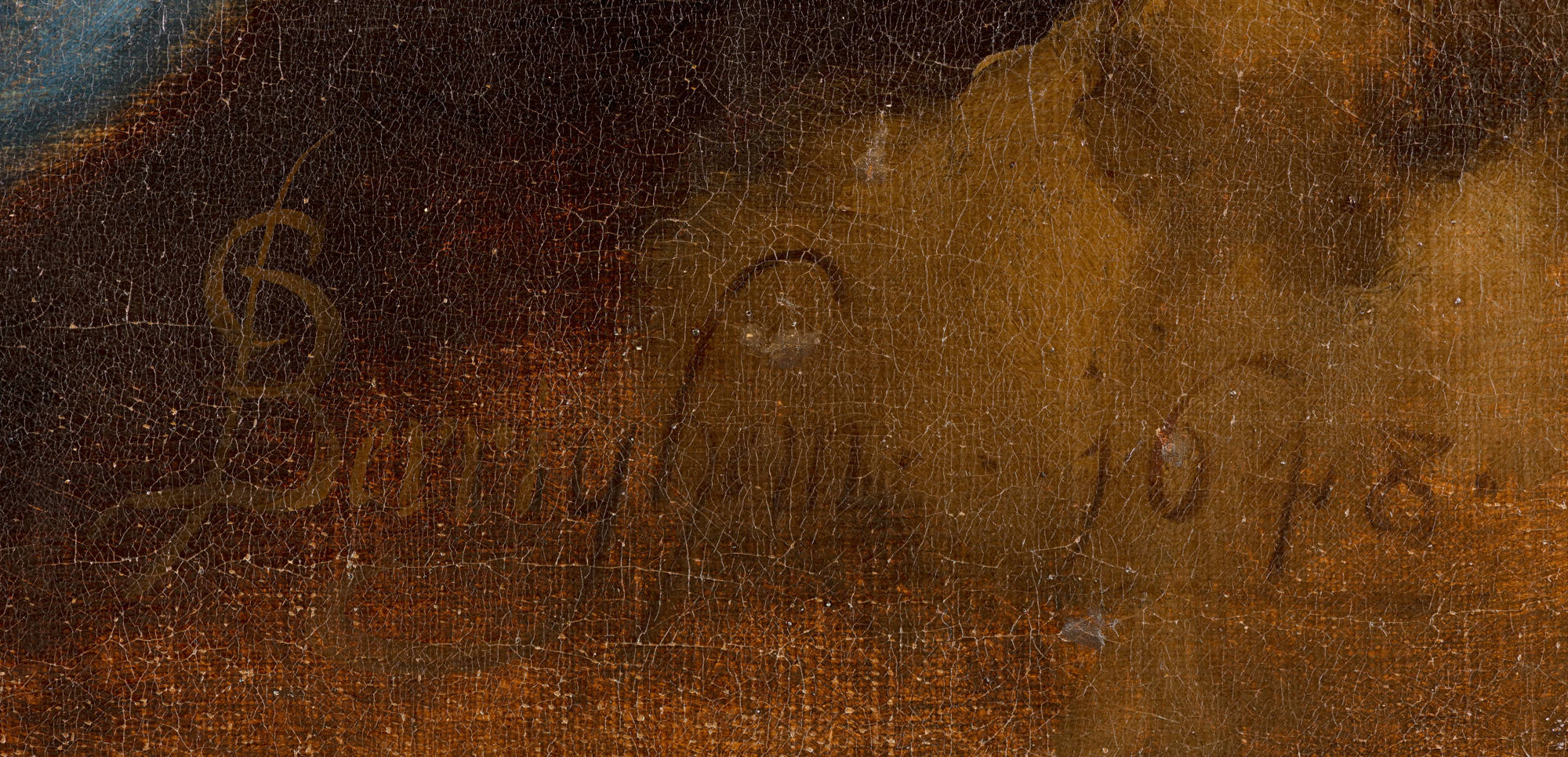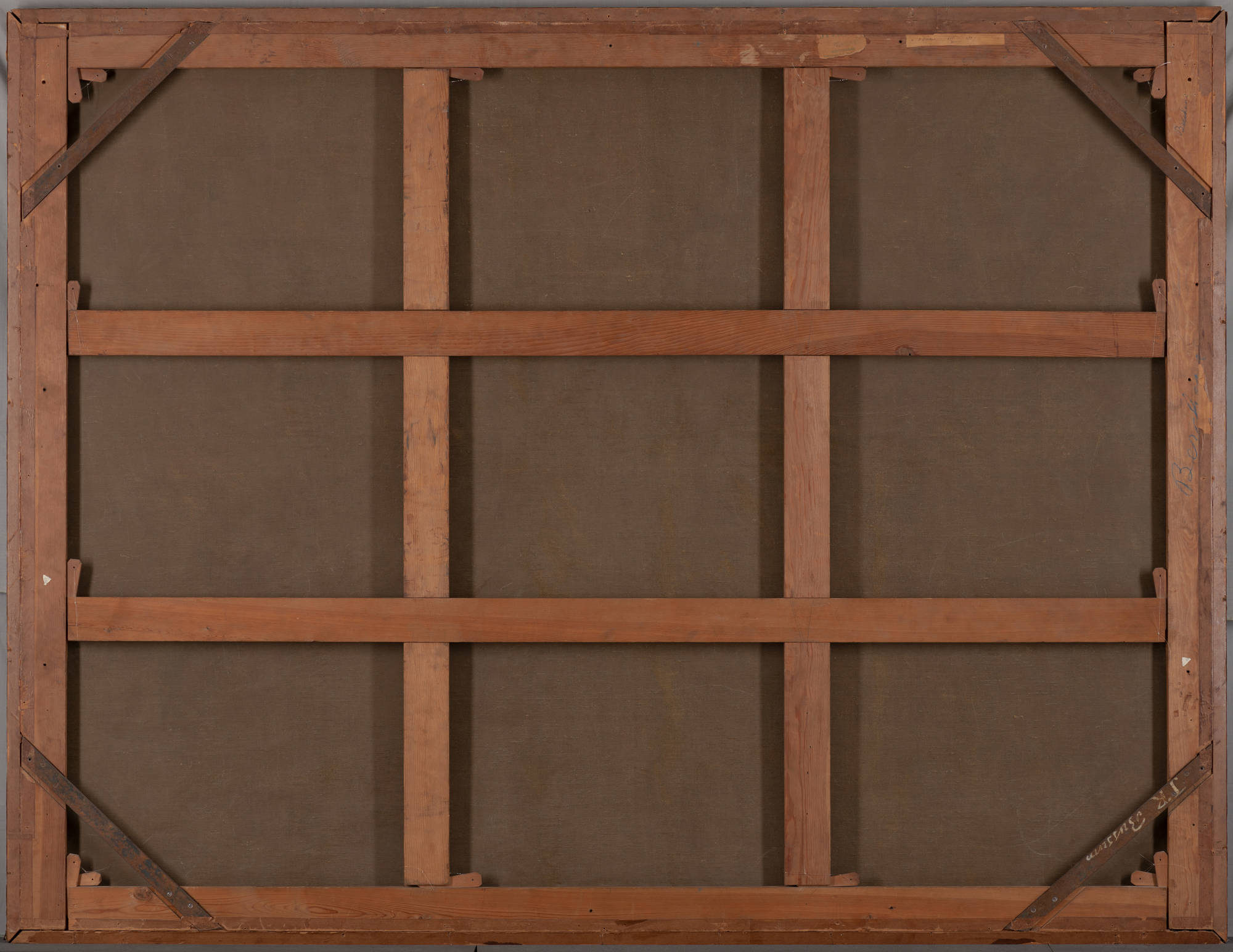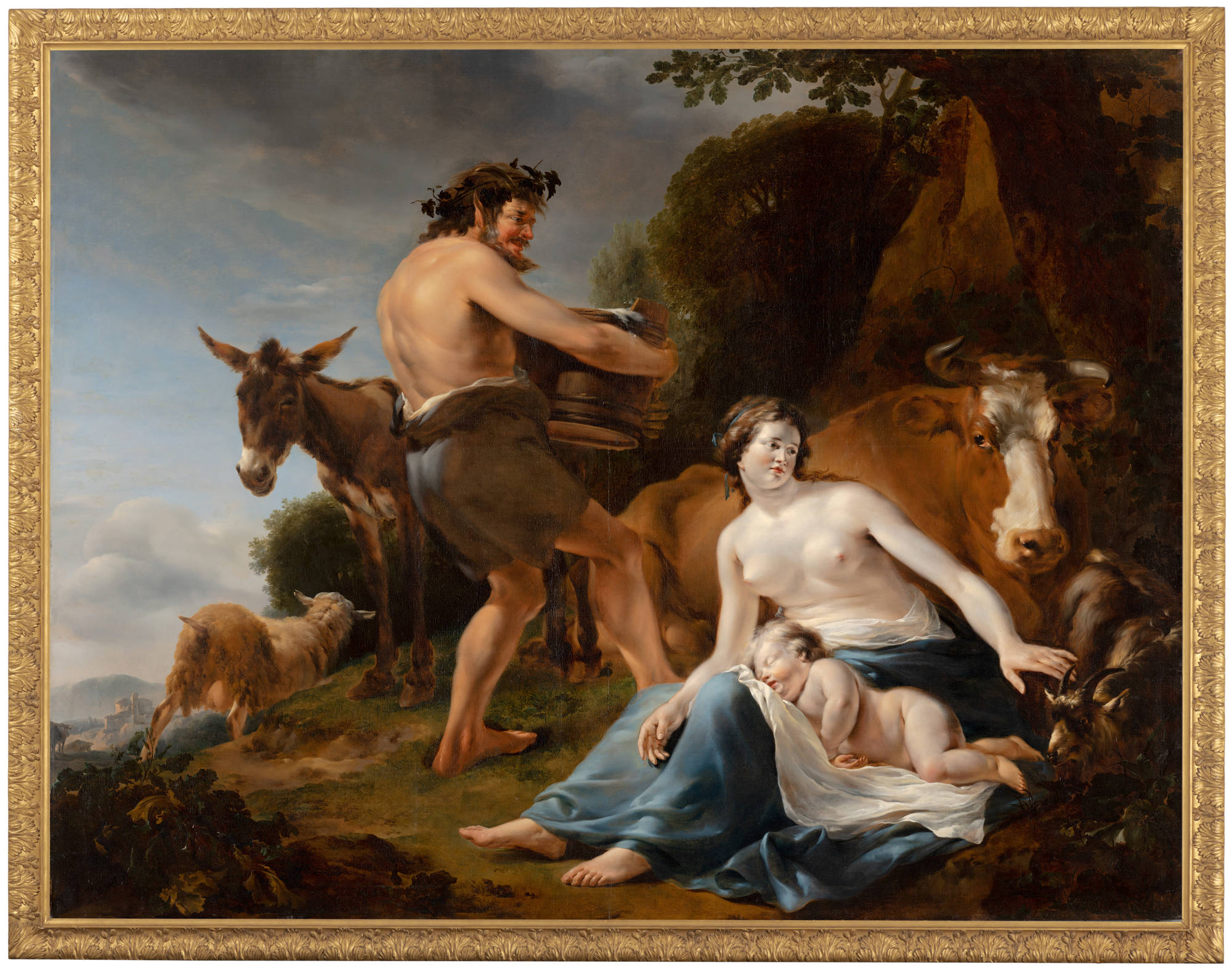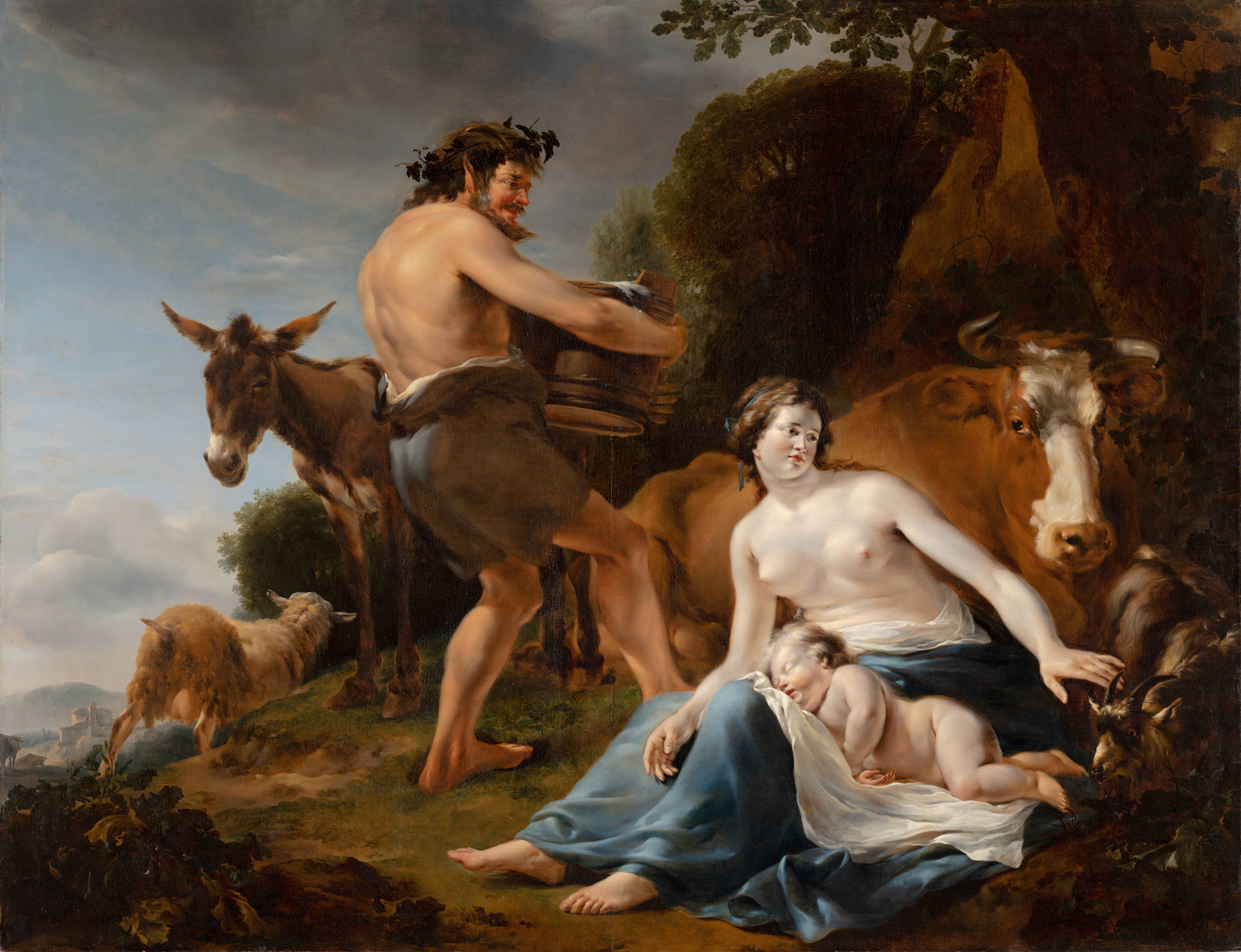This is a scene from the infancy of Zeus, the ruler of the Greek gods. Zeus was not raised by his parents, but by nymphs. A normal childhood was impossible given that his father, Chronos, was in the habit of devouring his own children. After his brothers and sisters had been guzzled down, Zeus was brought to Mount Ida on Crete for safety and entrusted to the beautiful nymph Adrastea. She fed him honey, while the goat Amalthea suckled him with her own milk. Zeus was thus able to grow up untroubled into a strong and healthy young man.
In the painting the infant Zeus slumbers peacefully in the lap of his foster mother. The nymph raises her hand, cautioning the goat Amalthea to keep her distance and not disturb his afternoon nap. The scene makes a pleasant impression: the relaxed cow lies in the grass and a somewhat clumsy satyr does its best not to spill too much milk. The warm summer light and the idyllic landscape with a distant vista of a fortress conjure up a Mediterranean atmosphere. Berchem wonderfully rendered the protected and carefree life of the child Zeus. The deity’s deep sleep contrasts starkly with the life-threatening situation he escaped from just in the nick of time.
Berchem drew inspiration from a statuette (Baltimore, The Walters Art Gallery) by the popular sculptor Artus Quellinus (1609-1668). Berchem slightly modified the tilt of the head and shoulders of Quellinus’ cupid, so that in the painting it could rest against the nymph’s legs. Berchem consciously incorporated a direct and recognisable reference to the work of a famous contemporary artist.
Berchem specialised in small to medium-size paintings of Italianate landscapes with a few figures and animals. With its monumental dimensions and mythological subject this painting, thus, constitutes an exception. With it, Berchem may have been trying to obtain a prestigious commission for the decoration of the Oranjezaal in Huis ten Bosch Palace. Amalia van Solms (1602-1675) had this grand hall decorated in memory of her deceased spouse, Stadholder Frederik Hendrik (1584-1647). Berchem’s efforts, however, were in vain: he was not asked to participate in this project.
(this is a reworked version of a text published in: L. van der Vinde, Children in the Mauritshuis, The Hague 2007, pp. 32-33)








